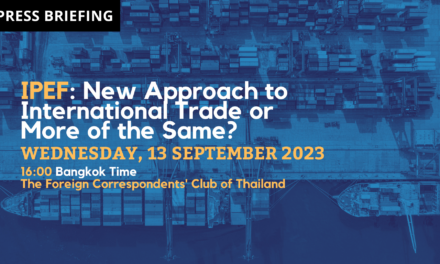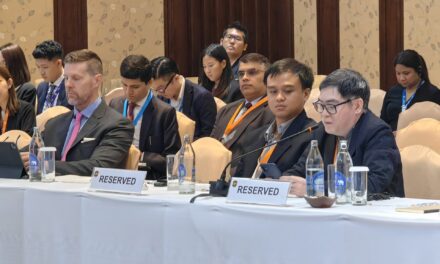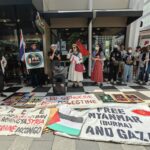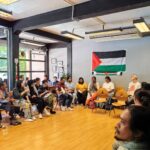by Walden Bello*
Like the European Union, Asean faces the choice of either “enlarging” or “deepening.” And the choice it makes will have major consequences on the prospects of two of its key projects, the Asean Free Trade Area (AFTA) and the Asean Regional Forum (ARF).
The Deepening Strategy: Focus on AFTA
The deepening strategy follows the vision of regional economic cooperation articulated in the group’s founding document, the Bangkok Declaration of 1967. Deepening would focus the regional body’s energies on making the ASEAN Free Trade Area (AFTA) a reality. This is the complex and challenging process of bringing down tariffs among the ASEAN countries to zero by the year 2003 in order to create a market of some 400 million that could serve as the basis of a coordinated regional industrialisation.
As we all know, ASEAN in its first 20 years failed miserably as a body to bring about greater regional economic integration. Scheme after scheme failed, from the ambitious ASEAN Industrial Projects (AIP), which sought to assign large-scale complementary capital-intensive projects to different countries to develop, to the ASEAN Industrial Complementation Scheme (AIC), which planned to divide different production phases of the automobile and other industries among member countries.
AFTA, which was launched in 1992, is ASEAN’s latest attempt at serious integration via trade policy, a task made very urgent by the competition offered by the APEC pan-Pacific free trade area plan pushed by the United States and Australia, which would make coordinated regional integration at the ASEAN level simply impossible.
Will ASEAN succeed this time? The ASEAN economic elites continue to exhibit strong hesitations in following up their declared commitments to bring down tariffs to agricultural and industrial products, leaving many observers sceptical about AFTA meeting the 2003 free trade deadline.
Another major problem is US opposition to AFTA trade liberalization that does not take place as part of a larger Asia-Pacific-wide program of trade liberalization. AFTA, according to US Trade Representative Charlene Barshefsky, is an example of how “governments are pursuing strategic trade policies and, in some cases, preferential trading arrangements, forming relations around us, rather than with us, and creating new exclusive trade alliances to the potential detriment of US prosperity and leadership.”
The Enlargement Strategy: Driven by Realpolitik
But probably the most serious threat to making AFTA a reality is the “enlargement” of ASEAN project that some elements in ASEAN have designated as a priority.
Enlargement would bring enormous complications to AFTA. Unlike the Western European members of the EU that are contemplating bringing in new economies into the Union, the members of ASEAN have still to carry out the first phase of economic integration via a free trade area. Yet they have moved quickly to bring in four economies, Vietnam, Burma, Cambodia, and Laos, which are quite different from the original six. All are at a much lower stage of development and three of them are marked by a much greater role of the state in the economy than the original ASEAN members. True, Vietnam has already been admitted, but this is not the time to complicate AFTA’s future even more. Cambodia, Laos, and Burma should be admitted into ASEAN, yes, but only after there are, among other conditions, substantive steps taken in the enormously complicated phase of economically integrating the existing members.
The enlargement strategy is dictated by political considerations, and in pursuing it, ASEAN courts a repeat of its earlier history. For it was regional Realpolitik that sabotaged ASEAN’s earlier efforts to move towards meaningful integration.
From the late sixties to the early seventies, the ASEAN governments were preoccupied with the Cold War and the Vietnam War, where they were allied with the US. And in the late seventies, in a move that went against the spirit of the Bangkok Declaration, ASEAN allowed itself to become an anti-Vietnamese alliance. Its program for economic cooperation was placed indefinitely on the backburner as it became the most active backer of the “Democratic Kampuchea” coalition (of which the Khmer Rouge was the main component), following a common strategy with China and the United States.
Today, regional Realpolitik is again driving the enlargement agenda. Bringing in Vietnam in 1995 was largely a strategic move to strengthen ASEAN’s military capabilities vis-a-vis China–one which was, incidentally, in step with the United States’ evolving strategic policy of “containing” a country that is increasingly seen by Washington as a rival regional hegemon.
Burma and the Realpolitik of Authoritarianism
The current enlargement effort is centred on bringing in Burma. It has been pushed mainly by President Suharto of Indonesia, who has deployed a lot of effort and resources to this enterprise, including his prestige as the “grand old man” of ASEAN–the only chief of state who was in power when the formation was established in 1967.
Realpolitik is a major consideration in Suharto’s moves, and this is the Realpolitik of authoritarianism. Suharto is increasingly worried about the pressures for democratisation in Indonesia, which he sees as being influenced by the rising pressures for greater democracy throughout the region. Bringing in more non-democratic regimes would strengthen the authoritarian pole in the balance of power within ASEAN: it would serve to neutralise the formal democratic regimes within ASEAN–the Philippines and Thailand–and prevent them from following foreign policies that would be more sympathetic to democratic movements on the ground.
Moreover, bringing in more authoritarian regimes would create a solid front against external criticism of repressive practices not only in Indonesia but in the majority of the ASEAN states. Ideologically, “ASEAN brotherhood” is being defined as a brotherhood of authoritarian states ranged against liberal democracy, human rights, and other “western biases.” It is not surprising, then, that the other authoritarian governments, notably Malaysia, Singapore, and Brunei, have lined up strongly behind Indonesia.
This anti-democratic Realpolitik is working. Isolated, weak-kneed, and almost ashamed of their democratic credentials, the Thai and Philippine governments have allowed themselves to be pushed into endorsing the majority position on Burma. And, with Burma in ASEAN, opposition at the state level to the democratic current would be even stronger.
The Burma Issue and the Future of the ARF
The authoritarian Realpolitik promises to damage not only AFTA but another key project, the ASEAN Regional Forum (ARF), which ASEAN hopes to make the principal mechanism for the resolution of conflict and security issues in the Asia-Pacific region.
The ARF has a structure that might be best characterised as one of concentric circles. The core or inner circle is the ASEAN member countries, who have the initiative in setting the agenda. The next circle is made up of the seven “dialogue partners,” which include, among others, the United States, Australia, and Japan. An outer circle is made up of Russia and China, ASEAN’s “consultative partners,” followed by the periphery composed of “ASEAN observer states,” namely Papua New Guinea, Laos, Burma, and Cambodia.
Making Burma a member of ASEAN would mean bringing an extremely controversial actor from the periphery to the very center of ARF decision-making, and this can only bring a great deal of opposition and criticism from many of the key dialogue partners–opposition which is justified, since the military-dominated SLORC is a totally illegitimate regime that is in power in defiance of the clearcut results of a democratic election. Burma’s central role in the ARF will become the issue in the ARF, and this can only distract the forum from pressing peace and security concerns, such as the Spratly Islands dispute and the effort to gain the nuclear powers’ assent to the creation of a nuclear weapons-free zone in the region. All this can only erode the ARF’s credibility as an effective multilateral security mechanism.
Such a situation would play into the hands of the powers that are suspicious and even unsympathetic to the ARF, like the United States. Washington has often dismissed the ARF as a “talk shop,” and its strategy has been to undercut its development as an effective multilateral structure for conflict resolution, preferring to limit the forum to serving as a weak adjunct to Washington’s preferred security mechanisms in the Asia-Pacific region: its bilateral treaties with East Asian countries and its 100,000 troops deployed in land bases and ships.
In sum, granting Burma membership in ASEAN is an ill-advised move that the regional body cannot afford at this point, since it would complicate even more the already complex and challenging task of building AFTA and drive a stake right into the heart of the ARF.
It is partly for the reasons laid out above, incidentally, that institutes of strategic studies (the ISIS network) in ASEAN that were so influential in the formation of the ARF are said to have recommended against the entry of Burma at this time. ASEAN governments would be well advised to listen to their arguments instead of plunging into a dangerous and foolish strategy of enlargement that can only set back the realisation of ASEAN’s vision of becoming a prosperous bloc of integrated economies that serves as the hub of a peace and security framework for the Asia-Pacific region.
*Dr. Walden Bello is co-director of Focus on the Global South, a program of policy research and analysis of the Chulalongkorn University Social Research Institute in Bangkok and a professor of sociology and public administration at the University of the Philippines.




![G77 summit: Nations hope to establish new economic world order [Al Jazeera]](https://focusweb.org/wp-content/uploads/2023/10/Screenshot-2566-10-02-at-10.12.19-440x264.png)




